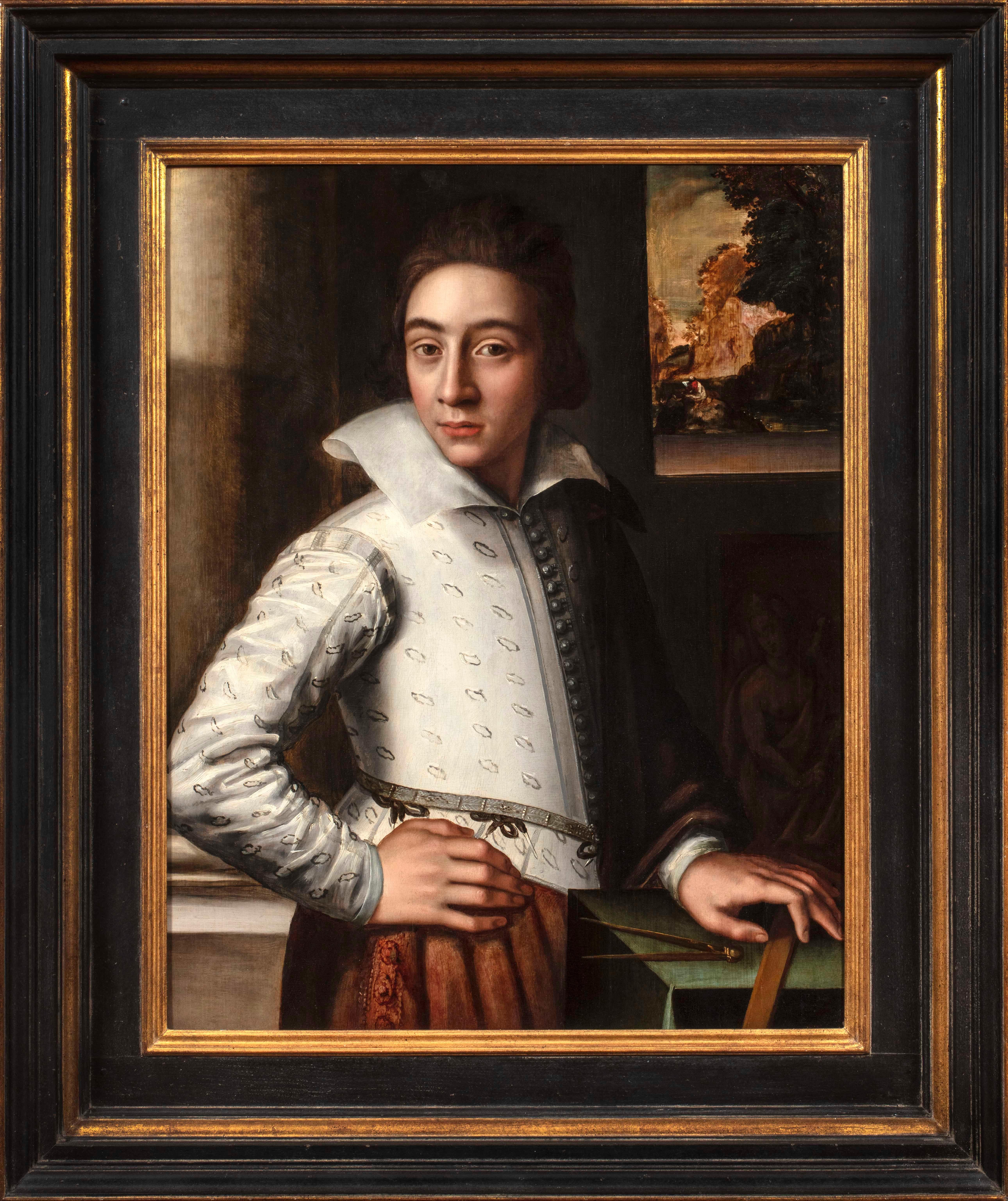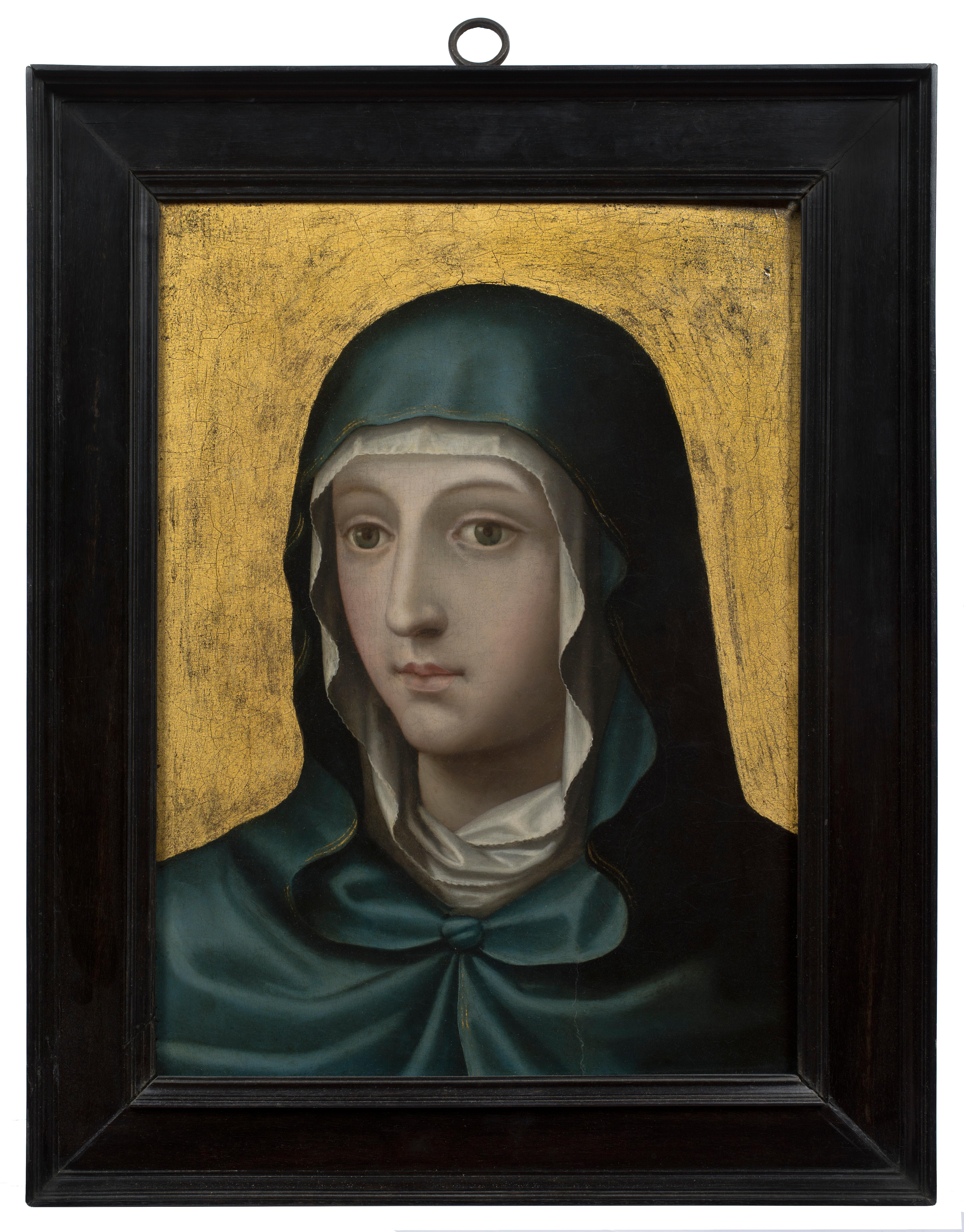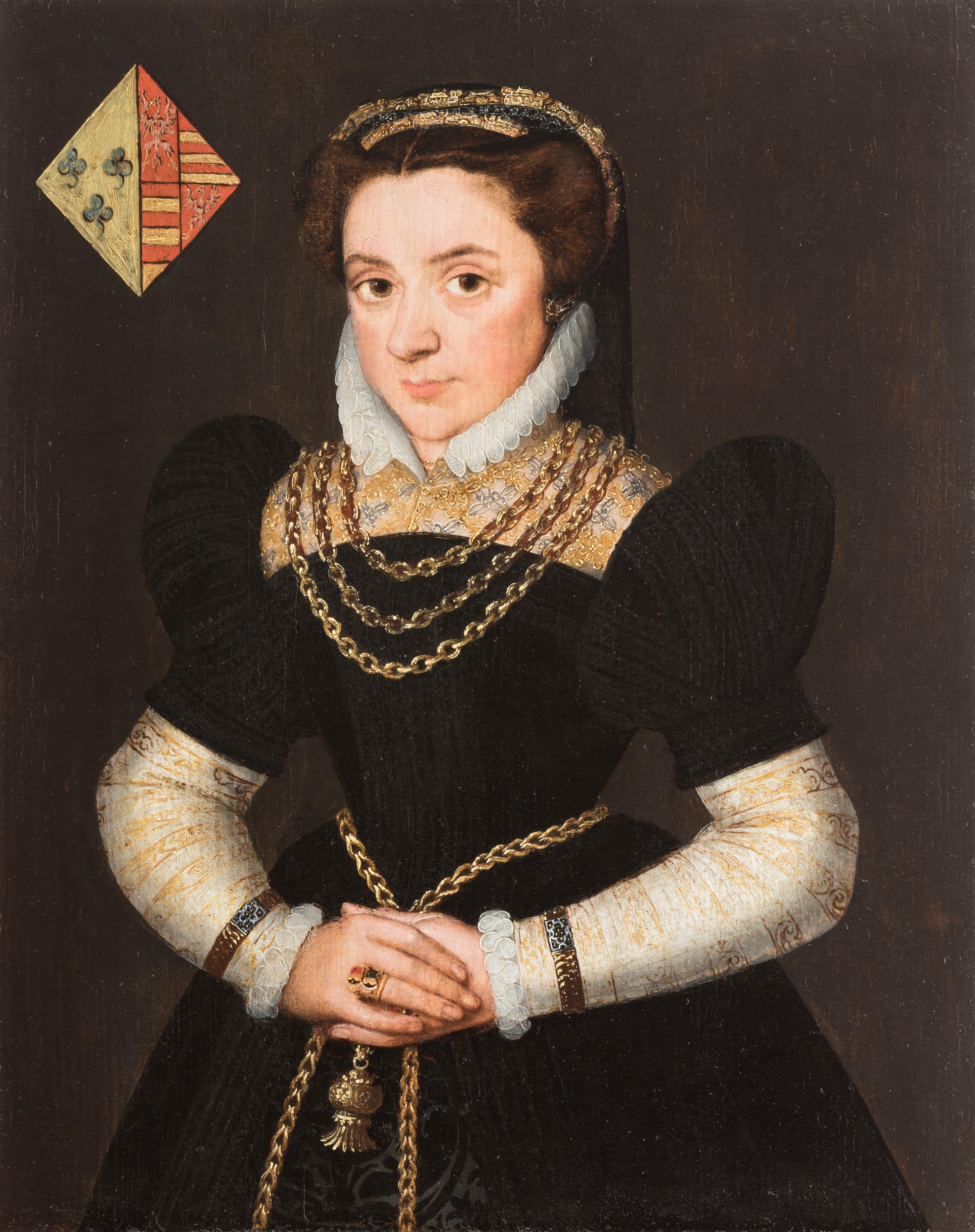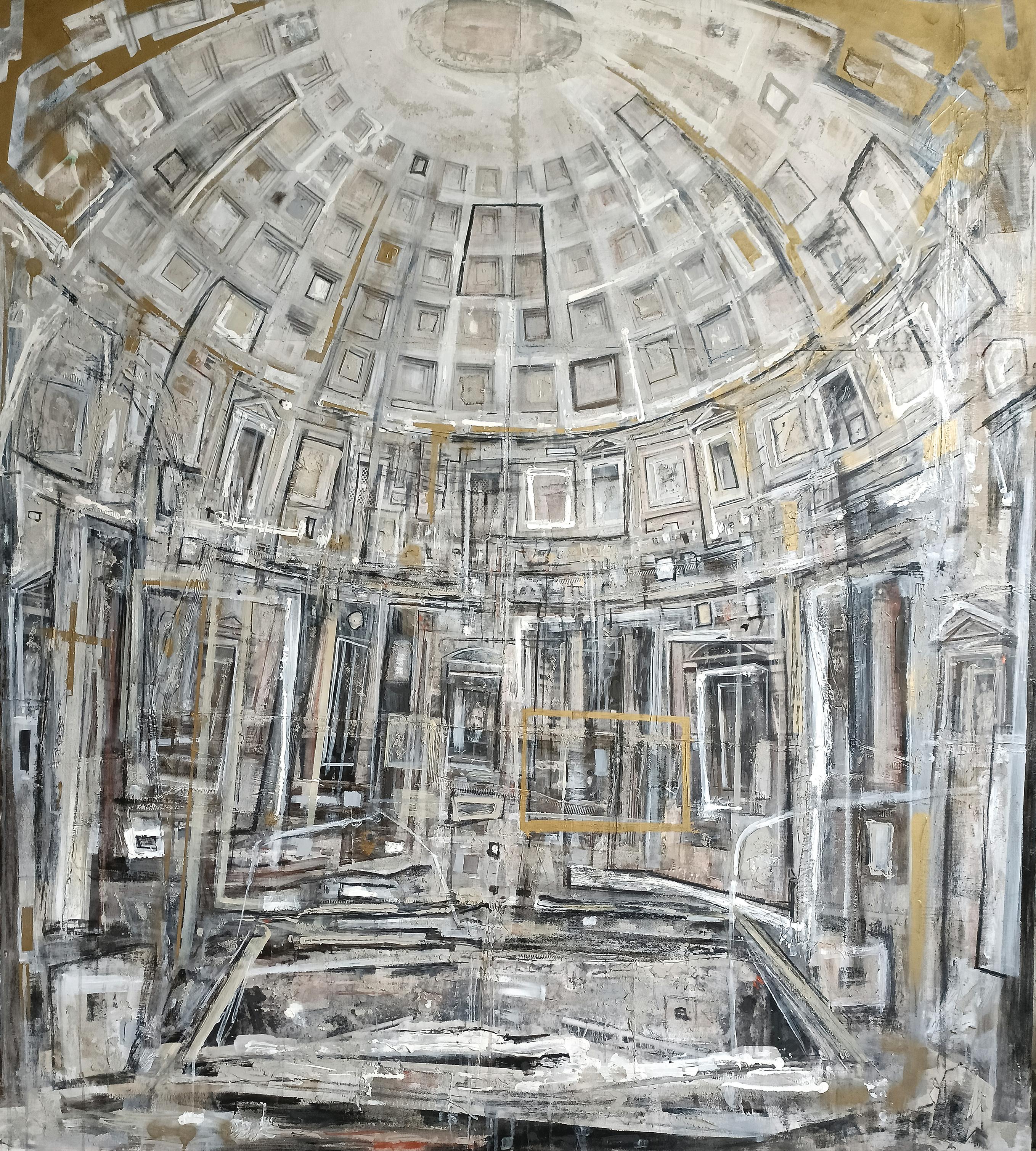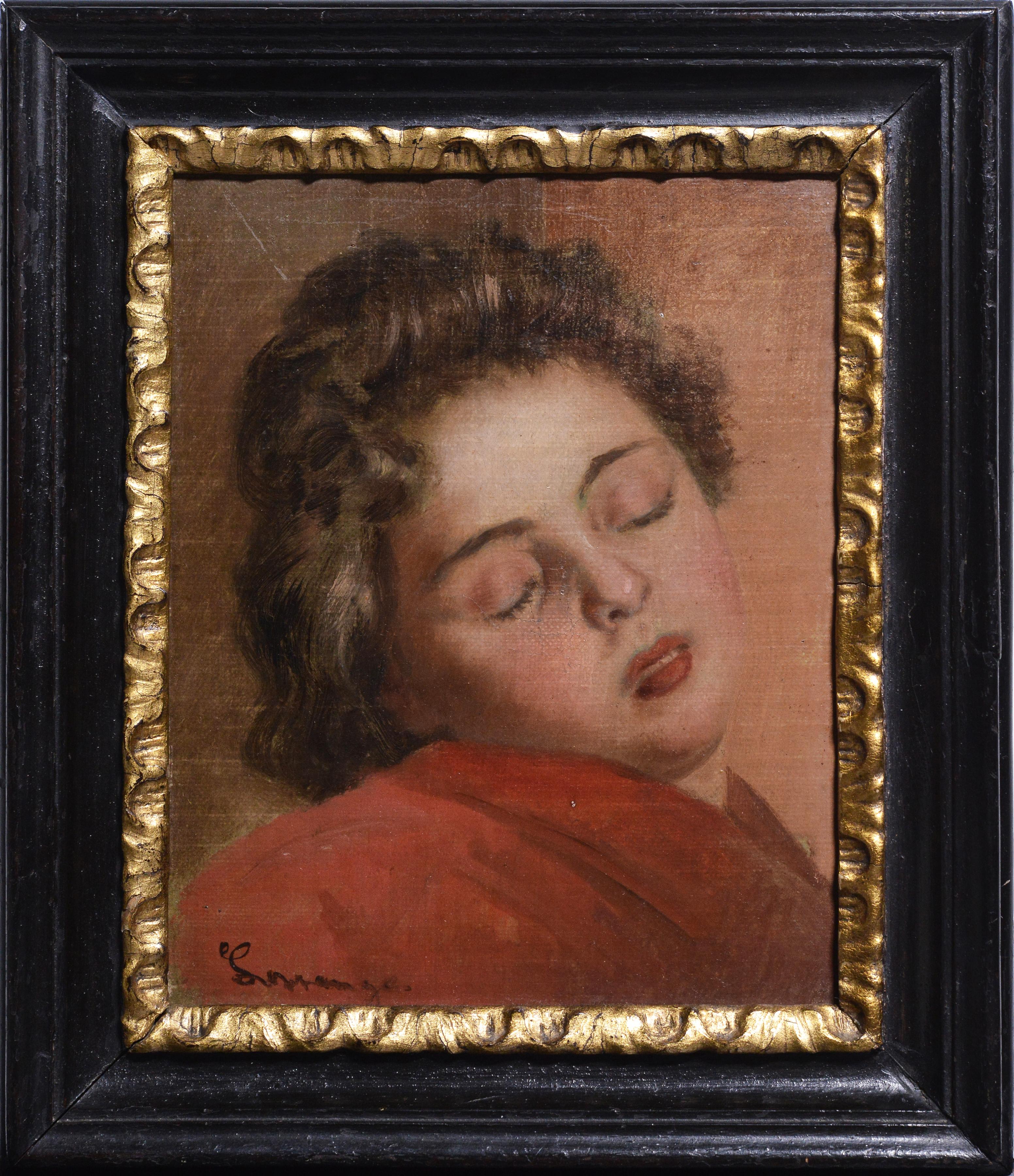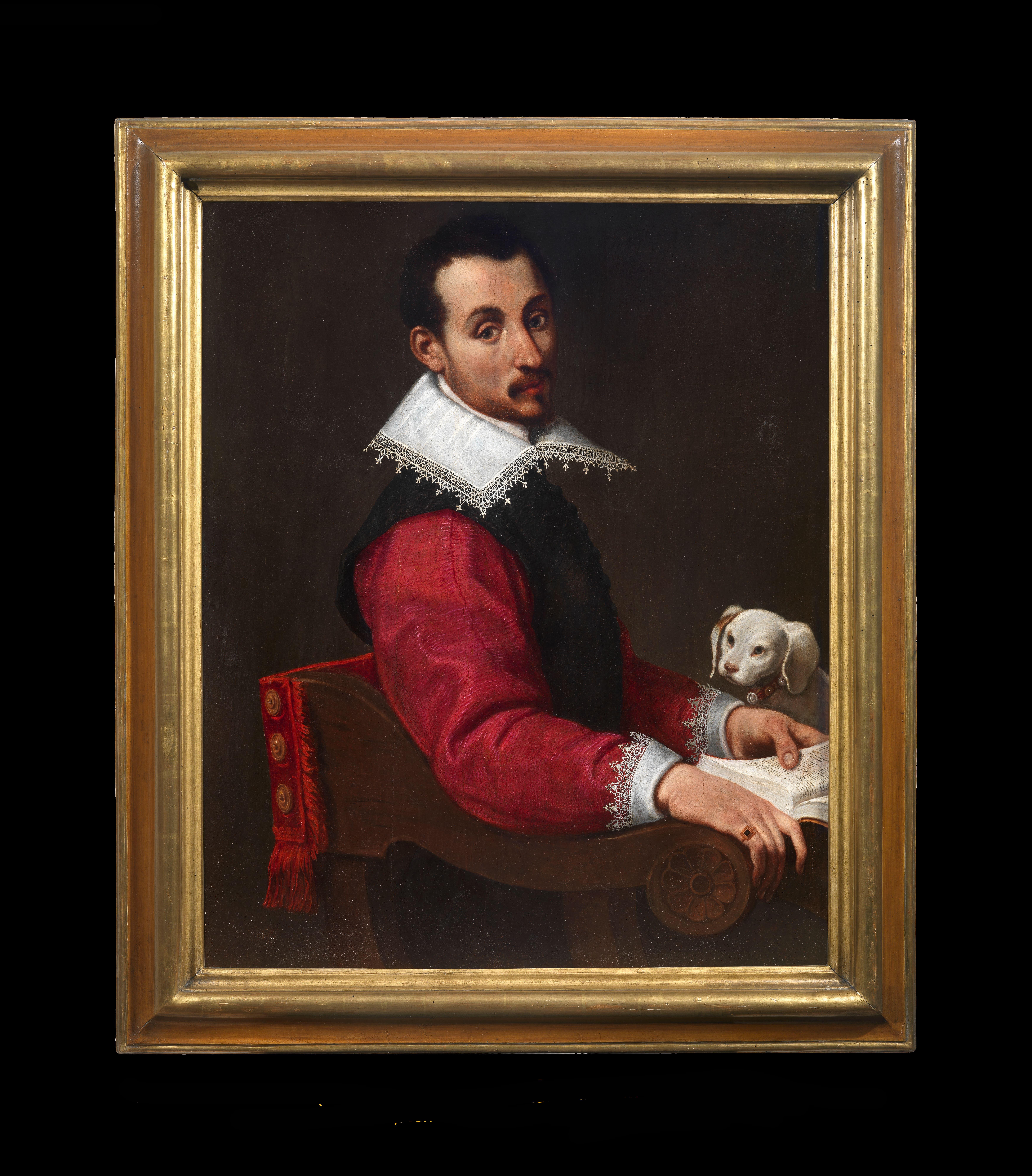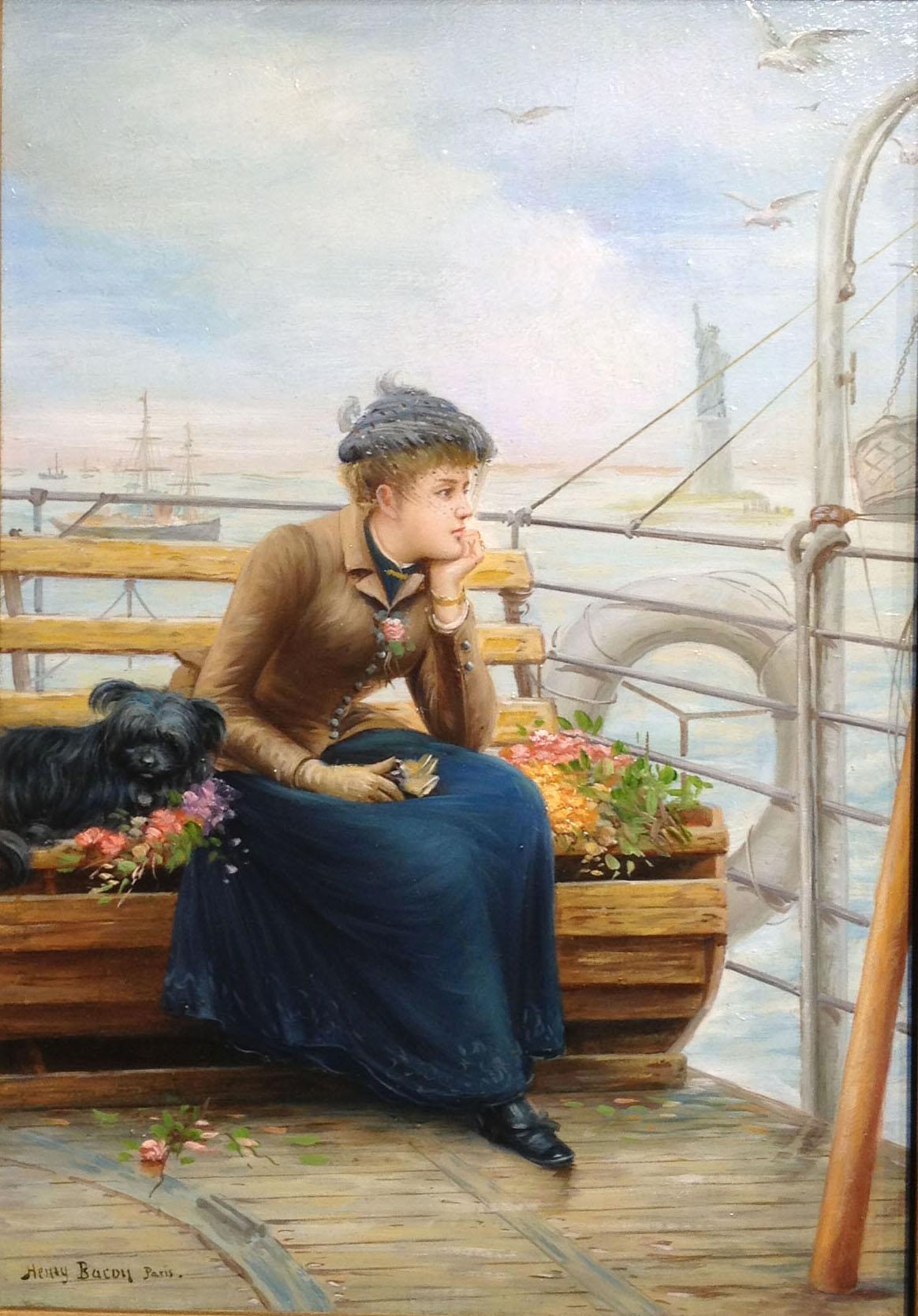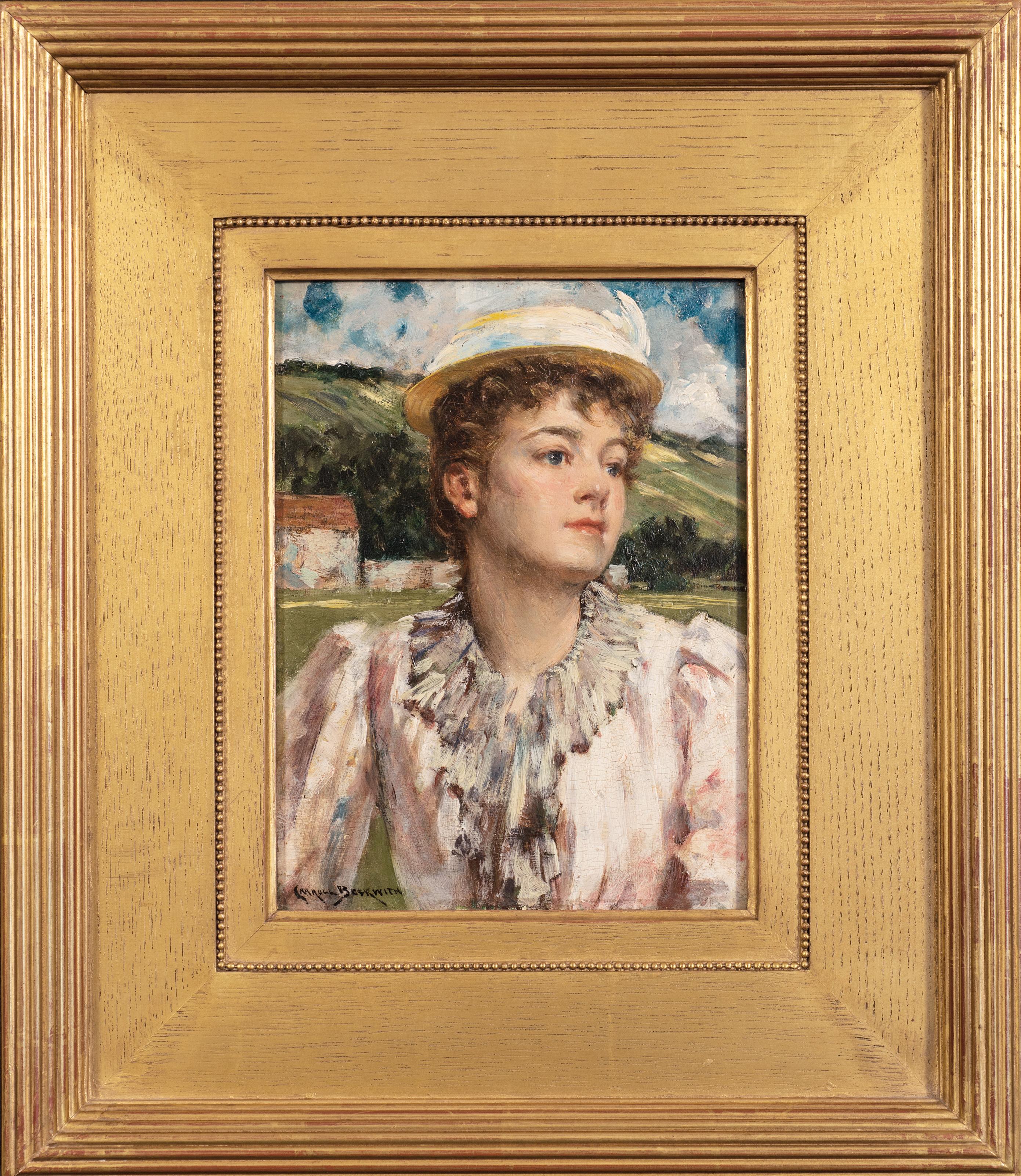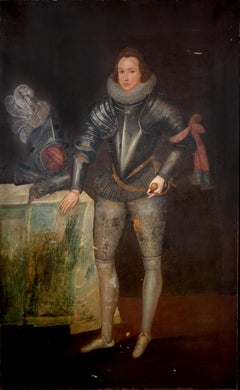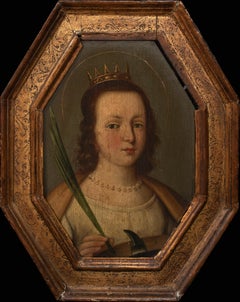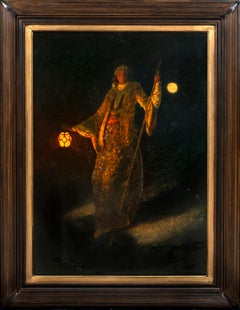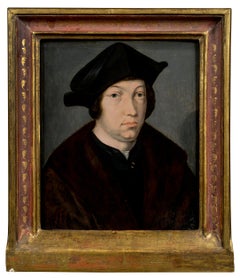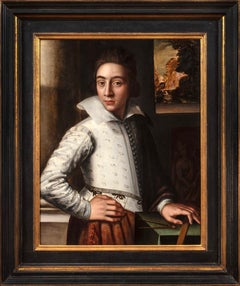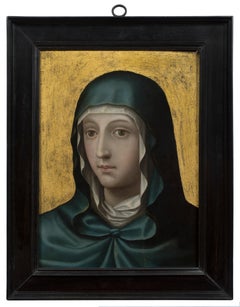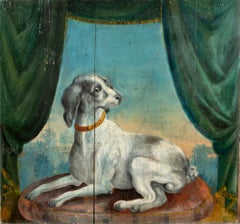
Portrait Of Dog, 17th Century
Want more images or videos?
Request additional images or videos from the seller
1 of 9
UnknownPortrait Of Dog, 17th Century
About the Item
- Dimensions:Height: 14.18 in (36 cm)Width: 13 in (33 cm)
- Medium:
- Period:
- Condition:
- Gallery Location:Blackwater, GB
- Reference Number:Seller: 7832951stDibs: LU157729001212
About the Seller
4.8
Platinum Seller
These expertly vetted sellers are 1stDibs' most experienced sellers and are rated highest by our customers.
Established in 2008
1stDibs seller since 2021
195 sales on 1stDibs
Typical response time: 1 hour
More From This SellerView All
- Portrait Of Baron Dudley North, 16th Century English SchoolLocated in Blackwater, GBPortrait Of Baron Dudley North, 16th Century English School Huge 16th Century Portrait of Dudley North, 3rd Baron North, attired for an Accession Day Tilt with a favour, traditiona...Category
16th Century Portrait Paintings
MaterialsOil, Panel
- Saint Catherine Of Alexandria, 16th Century Italian School - one of a pairLocated in Blackwater, GBSaint Catherine Of Alexandria, 16th Century Italian School - one of a pair 16th Century Italian School depiction of Saint Catherine Of...Category
16th Century Portrait Paintings
MaterialsOil, Panel
- By The Light Of The Lantern, 19th Century European Oreintalist SchoolLocated in Blackwater, GBBy The Light Of The Lantern, 19th Century European Oreintalist School Large 19th Century European Orientalist portrait of a woman at night illuminated by her lantern, oil on panel....Category
19th Century Portrait Paintings
MaterialsPanel, Oil
- Four Cockfighting Scenes, 19th CenturyLocated in Blackwater, GBFour Cockfighting Scenes, 19th Century English School Circa 1880 English School cockfighting scene, oil on panels. Good quality and condition rare matching set of four fighting sc...Category
19th Century Portrait Paintings
MaterialsOil, Panel
$2,559 Sale Price20% Off - Portrait Of Jeanne III d'Albret (1528-1572), 16th CenturyLocated in Blackwater, GBPortrait Of Jeanne III d'Albret (1528-1572), 16th Century French School Court Portrait - oil on panel Fine 16th century French Old Master portrait of Jeanne III, Queen regent or Navarre, oil on panel. Rare and early depiction of the Queen regent in court attire by a French court painter circa 1550. Jeanne d"Albret married Antione De Bourbon to become the Duchess of Vendome. Her son Henri would be come Henri III...Category
16th Century Portrait Paintings
MaterialsOil, Panel
- Portrait Of King Edward VI (1537-1553) as Prince Of Wales, 16th CenturyLocated in Blackwater, GBPortrait Of King Edward VI (1537-1553) as Prince Of Wales, 16th Century English School - Oil on panel - circa 1547 Large 16th Century portrait of Edward VI as Prince Of Wales, oil...Category
16th Century Portrait Paintings
MaterialsWood Panel, Oil
You May Also Like
- Portrait of a ManLocated in New York, NYProvenance: with Leo Blumenreich and Julius Böhler, Munich, 1924 Dr. Frederic Goldstein Oppenheimer (1881-1963), San Antonio, Texas; by whom given to: Abraham M. Adler, New York, un...Category
16th Century Old Masters Portrait Paintings
MaterialsOil, Panel
$52,500 - Portrait of an Artist (possibly a Self-Portrait)Located in New York, NYProvenance: Bradley Collection. Private Collection, Upperville, Virginia. Literature: Katlijne van der Stighelen and Hans Vlieghe, Rubens: Portraits of Unidentified and Newly Identified Sitters painted in Antwerp, Corpus Rubenianum Ludwig Burchard, vol. 19, pt. 3, London and Turnhout, 2021, under cat. no. 189, p. 161, and fig. 75. This painting had previously been considered to be by an anonymous Tuscan painter of the sixteenth century in the orbit of Agnolo Bronzino. While the painting does in fact demonstrate a striking formal and compositional similarity to Bronzino’s portraits—compare the nearly identical pose of Bronzino’s Portrait of a Young Man in the Metropolitan Museum of Art (Fig. 1)—its style is completely foreign to Italian works of the period. That it is painted on an oak panel is further indication of its non-Italian origin. This portrait can in fact be confidently attributed to the Antwerp artist Huybrecht Beuckelaer. Huybrecht, the brother of Joachim Beuckelaer, has only recently been identified as the author of a distinct body of work formerly grouped under the name of the “Monogrammist HB.” In recent studies by Kreidl, Wolters, and Bruyn his remarkable career has been delineated: from its beginnings with Joachim in the workshop of Pieter Aertsen; to his evident travels to Italy where, it has been suggested, he came into contact with Bronzino’s paintings; to his return to Antwerp, where he seems to have assisted Anthonis Mor in painting costume in portraits; to his independent work in Antwerp (where he entered the Guild of Saint Luke in 1579); and, later to his career in England where, known as “Master Hubberd,” he was patronized by the Earl of Leicester. Our painting was recently published by Dr. Katlijne van der Stighelen and Dr. Hans Vlieghe in a volume of the Corpus Rubenianum, in which they write that the painting “has a very Italian air about it and fits convincingly within [Beuckelaer’s] oeuvre.” Stighelen and Vlieghe compare the painting with Peter Paul Ruben’s early Portrait of a Man, Possibly an Architect or Geographer in the Metropolitan Museum of Art, in which the sitter holds a compass and wears a similarly styled doublet (Fig. 2). Huybrecht both outlived and travelled further afield than his brother Joachim, who made his career primarily in Antwerp. Whereas Joachim was the main artistic inheritor of their uncle and teacher, Pieter Aertson, working in similar style and format as a specialist in large-scale genre and still-life paintings, Huybrecht clearly specialized as a painter of portraits and was greatly influenced by the foreign artists and works he encountered on his travels. His peripatetic life and his distinctly individual hand undoubtedly contributed to the fact his career and artistic output have only recently been rediscovered and reconstructed. His periods abroad seem to have overlapped with the mature phase of his brother Joachim’s career, who enrolled in the Antwerp Guild of Saint Luke much earlier than his brother, establishing himself as an independent painter in 1560. Joachim’s activity was confined to the following decade and half, and his latest work dates from the last year of his life, 1574. Our portrait was likely produced in the late 1560s, a dating supported by the dendrochronological investigation performed by Dr. Peter Klein, which established that it is painted on an oak panel with an earliest felling date of 1558 and with a fabrication date of ca. 1566. This painting presents a portrait of an artist, almost certainly Huybrecht’s self-portrait. The young sitter is confidently posed in a striking patterned white doublet with a wide collar and an abundance of buttons. He stands with his right arm akimbo, his exaggerated hands both a trademark of Huybrecht and his brother Joachim’s art, as well as a possible reference to the “hand of the artist.” The figure peers out of the painting, interacting intimately and directly with the viewer, as we witness him posed in an interior, the tools and results of his craft visible nearby. He holds a square or ruler in his left hand, while a drawing compass...Category
16th Century Old Masters Paintings
MaterialsOil, Panel
- The Veronica of the Virgin (Verónica de la Virgen)Located in New York, NYThe panel has been attributed both to Joan de Joanes and his son Vicente Macip Comes (Valencia, ca. 1555 – 1623). Provenance: Private Collection, England, by 1886 (according to stencils on the reverse) Private Collection, New Jersey, until 2010 The Veil of Veronica, often called the Sudarium, is one of the most important and well-known relics of Christ. According to legend, Veronica offered Christ her veil as he carried the cross to his crucifixion. He wiped his face with the veil, which left the cloth miraculously imprinted with his image. Depictions of Christ’s face on a veil, or simply images that focused in on Christ’s face, were treasured objects of religious devotion. The popularity of this format also inspired similar images of the face of the Virgin. The iconographic type of the present painting is known as the Veronica of the Virgin, which was especially favored in late medieval and early Renaissance Spain. Distinct from the images of the suffering Christ, the Veronica of the Virgin is based on the legend that Saint Luke painted a portrait of Mary from life. Although scholars have sometimes mistaken them for portraits of Queen Isabella I of Castile (known as Isabel la Católica) or as a depiction of Saint Maria Toribia (known as María de la Cabeza, or, Mary of the Head), paintings like this one were clearly intended as images of the Virgin in the style of Saint Luke’s lost portrait. The Veronica of the Virgin was especially popular in Valencia, and depictions of this subject produced there all stem back to one visual prototype: a Byzantine image in the city’s cathedral (Fig. 1). This early treatment of the Veronica was given to the cathedral in 1437 by Martin the Humane, King of Aragon and Valencia, who promoted religious veneration of the Veronica of the Virgin as part of the celebration of the Immaculate Conception of Mary. This devotion spread throughout Martin’s kingdom and particularly took hold in Valencia, where the Byzantine image resided. The image, which is displayed in a gold reliquary...Category
16th Century Old Masters Paintings
MaterialsOil, Wood Panel
- 18th Century Venetian School Portrait of a Bishop Oil on Panel Green Brown BlackLocated in Sanremo, ITPainting oil on panel measuring 40 x 30 cm without frame and 48 x 38 with frame representing a great bishop of the Venetian school from the first half of the 18th century. Very curi...Category
Early 18th Century Italian School Portrait Paintings
MaterialsOil, Wood Panel
- Fine Old Master Portrait, by Gillis Claeissens, Portrait of a Lady, 1580, BrugesBy Gillis ClaeissensLocated in Greven, DEGillis Claeissens Portrait of a Lady, probably "Anne Joigny-de Pamele" Oil on wood, 35,5 x 28 cm Gillis Claeissens has only recently been rediscovered as an important portrait painter of the 16th century. He received his training in the studio of his father, Pieter I Claeissens. Gillis became a freemaster of the St Luke's Guild in Brussels in 1566 and worked at the court of Alexander Farnese in Brussels between 1589 and 1592. Later he was also court painter to the Archdukes Albert and Isabella. After his return to Bruges, he created portraits of high Bruges society. It was only through the Forgotten Masters exhibition in Bruges in 2018 that the work of Gillis Claeissens was rediscovered. The present painting recently turned up in a private collection and was confirmed as a typical work by Claeissens by Mrs Oosterwijk at the Museum Groeninghe in Bruges. Gillis Claeissens or Egidius Claeissens (Bruges, 1526 – Bruges, 17 December 1605) was a Flemish painter of portraits and altarpieces and a member of a prominent family of artists originating in Bruges. It has only been possible to distinguish Gillis Claeissens' work from that of his father and siblings after scholars discovered a contract with the artist for the painting of a tryptich. It was further discovered in 2015 that he artist can be identified with the Monogrammist G.E.C. These discoveries have allowed to recognise Gillis Claeissens as an important portraitist alongside Pieter Pourbus in 16th century Bruges. Portrait Paintung, Old Master, Bruges School, Bruges Painting...Category
16th Century Northern Renaissance Portrait Paintings
MaterialsOil, Panel
- Torre VelascaLocated in Milano, MIUrbex is the English acronym for urban exploration and is an activity that consists of searching for and locating abandoned infrastructure with the goal of visiting, photographing and conveying its contents, with particular involvement of methodologies from geography, anthropology, sociology to cultural studies. Her works have been in the past approached to the works of Anselm Kiefer (b. 1945) and Giovanni Battista Piranesi (1720-1770), but in Gullotta's paintings the absence of color makes the spaces particularly ethereal, allowing them to be ideally lifted to new places and to new life. An artist of international caliber who has decided to entrust her return to her homeland to Almach Art Gallery in Milan, while maintaining connections with important galleries, such as Marlborough Fine Art in London and Galerie Koch in Hanover. The artwork represents the famous Velasca Tower in Milan. This artwork was exhibited during the Daniela Gullotta...Category
2010s Contemporary Portrait Paintings
MaterialsSandstone
Recently Viewed
View AllMore Ways To Browse
Dog Cushions
Cushions With Dog
Large 19th Century Dog Painting
Unknown 19th Century European School
Dog Painting On Cushion
Muhammed Ali
18th Century Oil Portrait Painting18
James Reynolds
Norman Rockwell Collectors
Marilyn Invitation Warhol
M Blake
Portrait Of Handsome Gentleman
Creepy Painting
Dutch Master Lady
Nfl Art
Portrait Of A Handsome Gentleman
Oil On Canvas French 1700
17th Century Stuart

